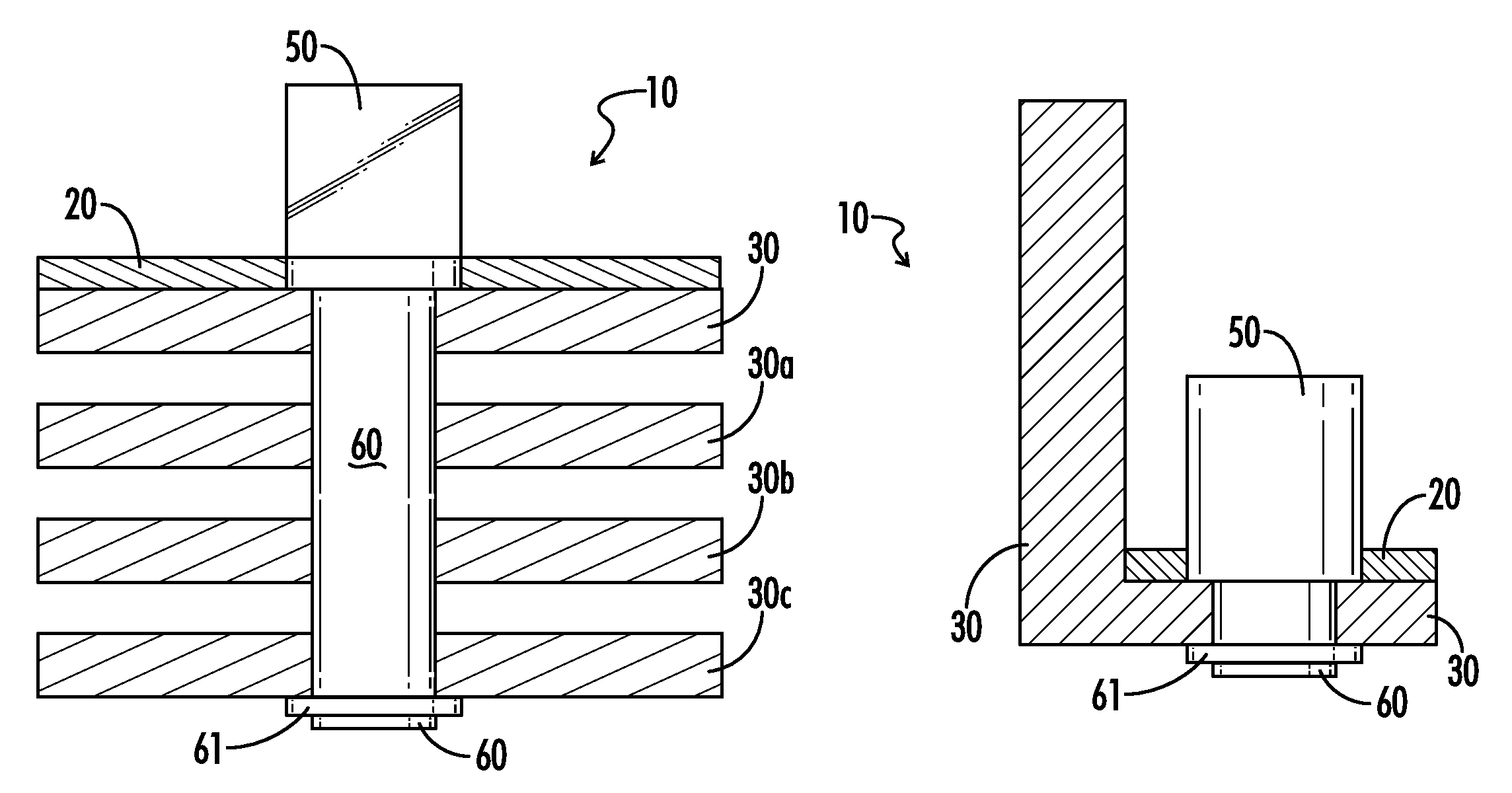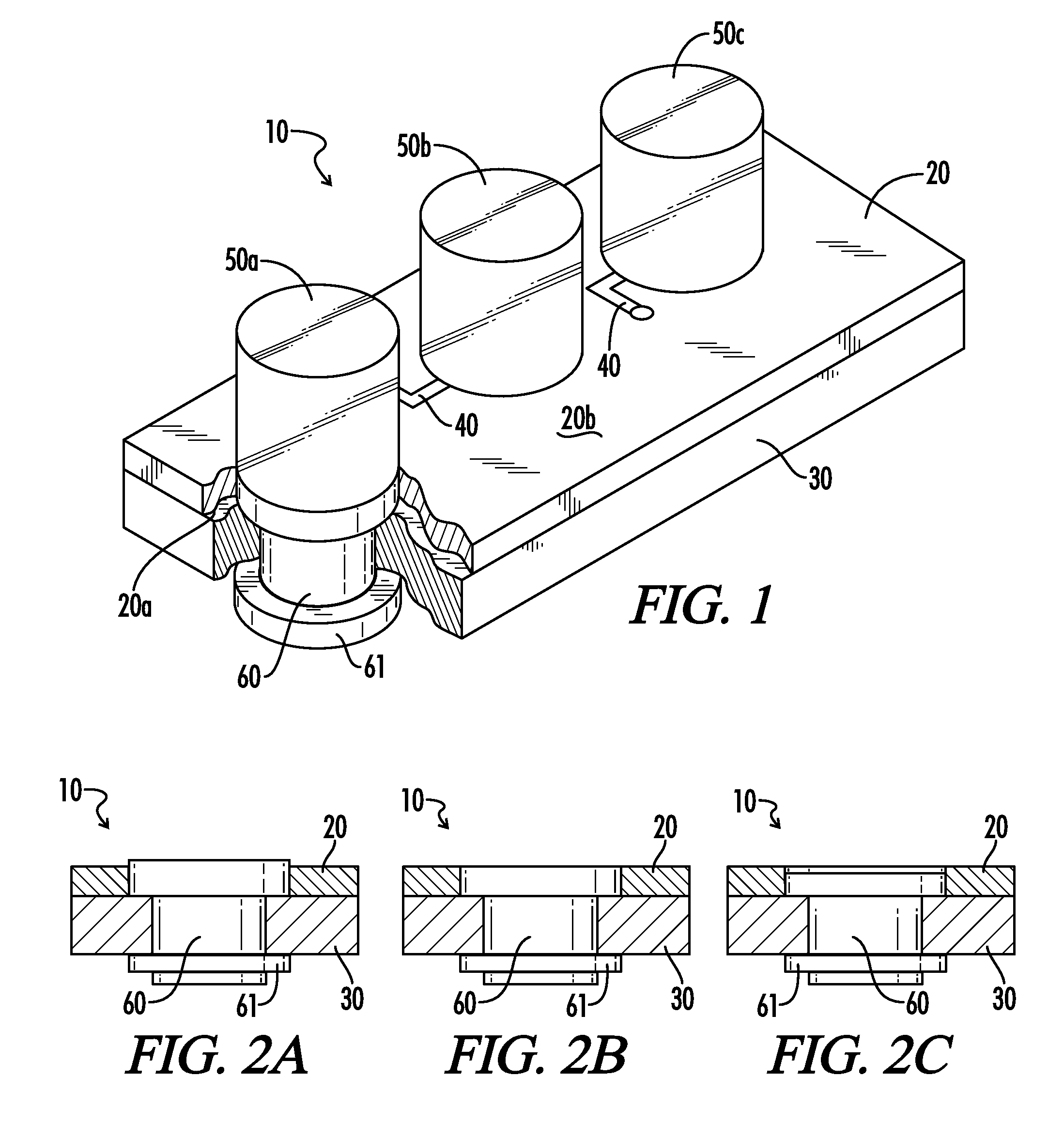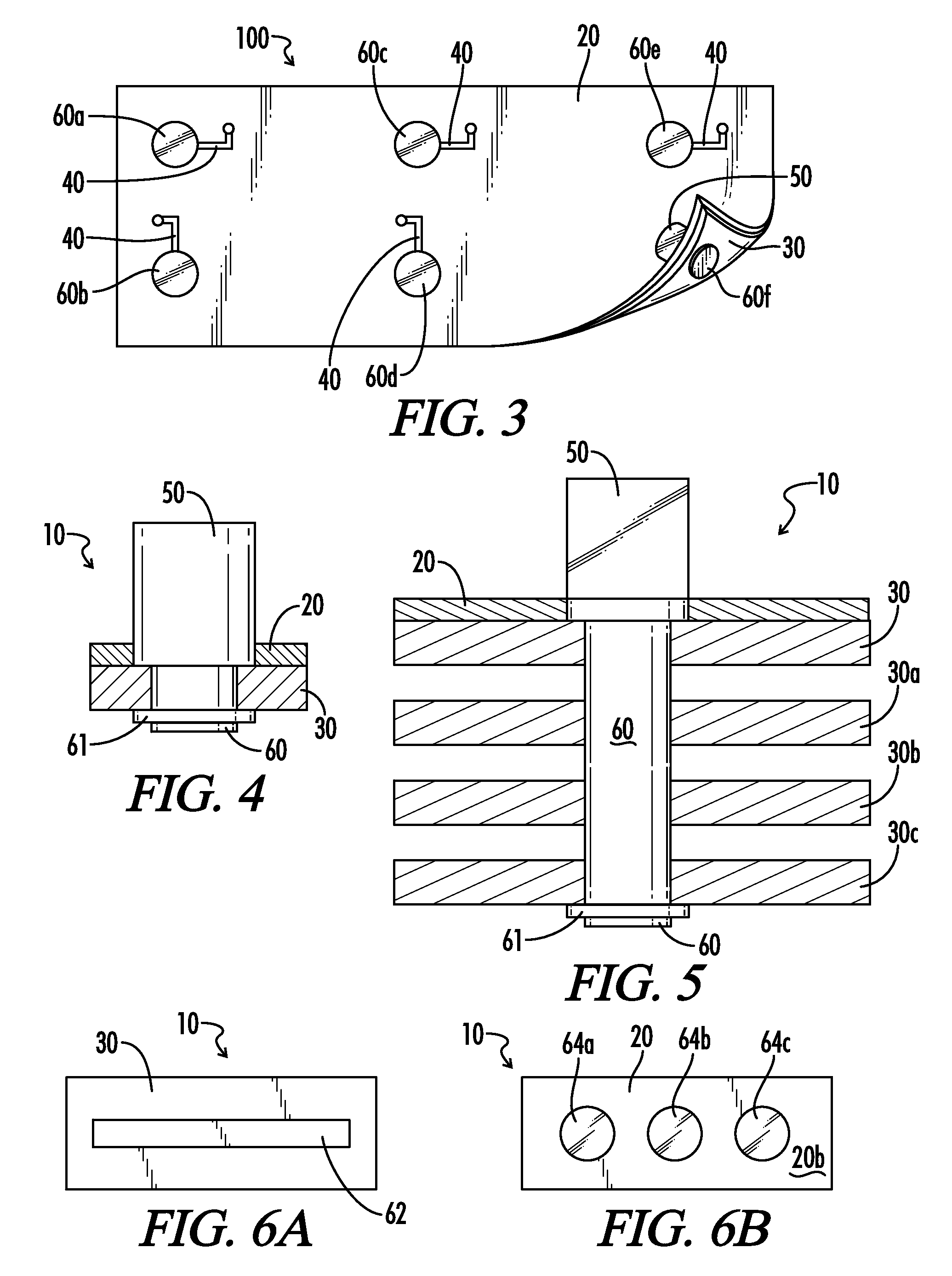Heat spreading circuit assembly
a circuit assembly and heat spreading technology, applied in the field of circuit assembly, can solve the problems of high cost of thermally conductive particles, large amount of heat that print circuit boards must help dissipate, and large amount of heat generated by components that must be dissipated, and achieve the effect of improving heat spreading capabilities
- Summary
- Abstract
- Description
- Claims
- Application Information
AI Technical Summary
Benefits of technology
Problems solved by technology
Method used
Image
Examples
Embodiment Construction
[0037]This invention is based upon the finding that the heat spreading function of a heat spreader layer on a circuit assembly is substantially improved when a thermal pathway between a heat-generating component, especially an LED, and the heat spreader layer is provided. Indeed, by the use of such a thermal pathway, the use of graphite-based heat spreader layers can provide improved heat spreading, even as compared to the use of aluminum or copper heat spreaders, with the added benefit of reduced weight.
[0038]By the term “circuit assembly” is meant an assembly including one or more electronic circuits positioned on a dielectric material, and can include laminates where one or more of the circuits is sandwiched between layers of dielectric material. Specific examples of circuit assemblies are printed circuit boards and flex circuits, as would be familiar to the skilled artisan.
[0039]Before describing the manner in which the invention improves current materials, a brief description o...
PUM
| Property | Measurement | Unit |
|---|---|---|
| Angle | aaaaa | aaaaa |
| Length | aaaaa | aaaaa |
| Thickness | aaaaa | aaaaa |
Abstract
Description
Claims
Application Information
 Login to View More
Login to View More - R&D
- Intellectual Property
- Life Sciences
- Materials
- Tech Scout
- Unparalleled Data Quality
- Higher Quality Content
- 60% Fewer Hallucinations
Browse by: Latest US Patents, China's latest patents, Technical Efficacy Thesaurus, Application Domain, Technology Topic, Popular Technical Reports.
© 2025 PatSnap. All rights reserved.Legal|Privacy policy|Modern Slavery Act Transparency Statement|Sitemap|About US| Contact US: help@patsnap.com



